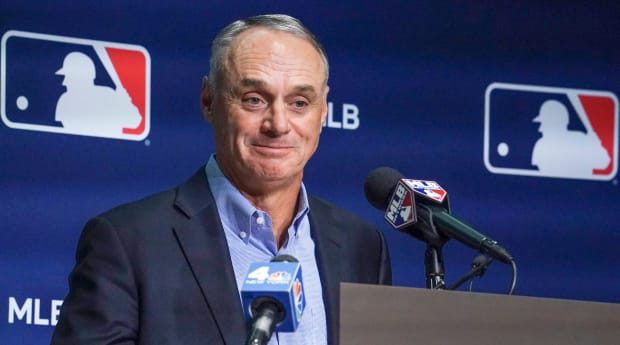Ninety-nine days after Major League Baseball owners locked out the players, beginning the sport’s first work stoppage in 26 years, the sides reached a deal on Thursday to start the season. We will have baseball’s body back. But what about its soul?
Baseball is better than no baseball. But there are structural problems with the sport as it exists right now, and the new collective-bargaining agreement did little to address them.

AP Photo/Bebeto Matthews
Start with the game itself. It can plod to a point that its current practitioners describe as “unwatchable.” The most efficient style of play is also the most boring—hitters tolerate strikeouts so they can try to hit home runs; pitchers tolerate home runs so they can try to rack up strikeouts. Viewership has slowed along with the sport. A forward-thinking agreement might have seen players and owners working together to improve the pace of play. Instead the sides agreed only to expand the designated hitter to the National League. (They also agreed to let the league make future rule changes unilaterally after it gives the union 45 days’ notice.)
The problems persist on a larger scale. The owners remain craven. The incentives remain wrong there, too. Profit has been decoupled from results: Teams do not get more in revenue sharing or in TV money when they succeed. Many do not even see much increase in attendance. So why try to win when losing makes you richer?
And between the Astros’ illegal sign-stealing scheme, the broad use of illegal substances by pitchers to make balls harder to hit and the league’s manipulation of those baseballs, commissioner Rob Manfred has lost players’ trust. The CBA did not address that, either.
Instead the sides focused mostly on setting the competitive-balance tax thresholds and penalties, establishing a fund to pay young players who perform well and raising the minimum salary. Those are all important considerations. But none overhauls the system. None forces owners to try.
Could the CBA have done more than tinker with finances? Maybe not. You can’t legislate doing the right thing. They tried, limiting the expanded playoffs to 12 teams; instituting a draft lottery that would penalize tankers; and introducing measures to try to curb service-time manipulation. But executives can slide around those new rules nearly as easily as they did around the old ones. If 83 wins buys you a ticket to October, do not expect anyone to shoot for 105. Tankers will settle for the 10th pick. General managers will still find a way to call up a player three days shy of what he would need for a full year of service time.
None of these problems go away now that both sides have ratified the CBA. Fixing them will require a much longer fight.
Sign up to get the Five-Tool Newsletter in your inbox every week during the MLB offseason.
Even the deal itself contained a reminder of how hard it can be to get teams to play fair: The league asked the union to to drop a grievance, filed in ’20, alleging that the 30 owners could have staged more than 60 games during the COVID-shortened season but chose not to instead. Still on the books is another grievance, filed in 2018, against the Marlins, A’s, Pirates and Rays, alleging that their owners pocketed revenue-sharing money instead of reinvesting it in payroll.
In his press conference announcing the deal, Manfred insisted that these moral worries are overblown. “I think almost without exception that clubs try to do the right thing,” he said. “They want to win. And different people may have different views as to how you should be trying to win and on what timeframe, but I think that the things that we added to the agreement were about addressing player concerns to the extent that we could.”
A few minutes later, he answered a question about his response to another player concern: that CBT thresholds—and therefore player compensation—have not kept pace with league revenues.
“I think that the MLBPA historically has wanted a market-based system [as opposed to a salary cap and a salary floor that would be tied to league revenues, as in the NFL, NBA and NHL],” he said. “Over multiple negotiations that’s been a primary objective of theirs. Markets produce market results, and I think that the changes that were made in this agreement moved dramatically in their direction on topics like the CBT threshold, and I think you’ll probably see a little different market result as a result of the changes.” In other words: Teams can and will spend what they want. Sometimes players will not like that amount.
The battle for the body of baseball is over. The more important fight is just getting started.







